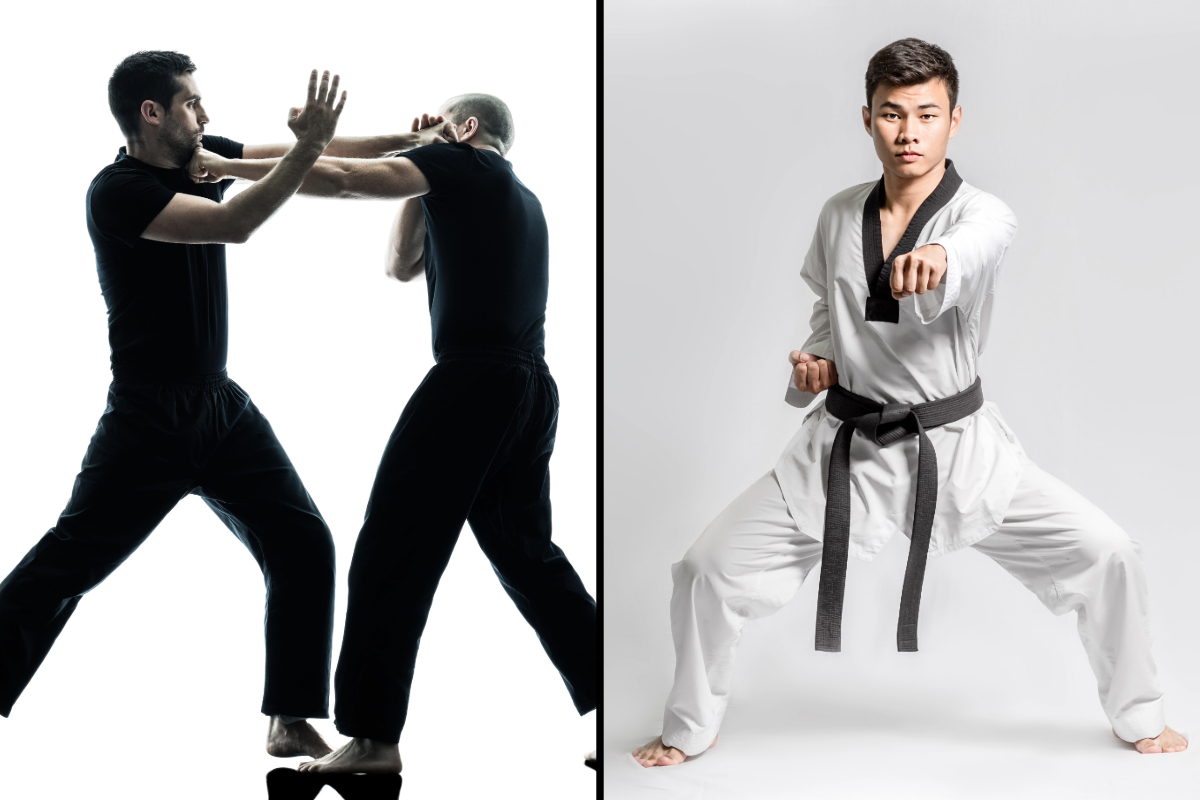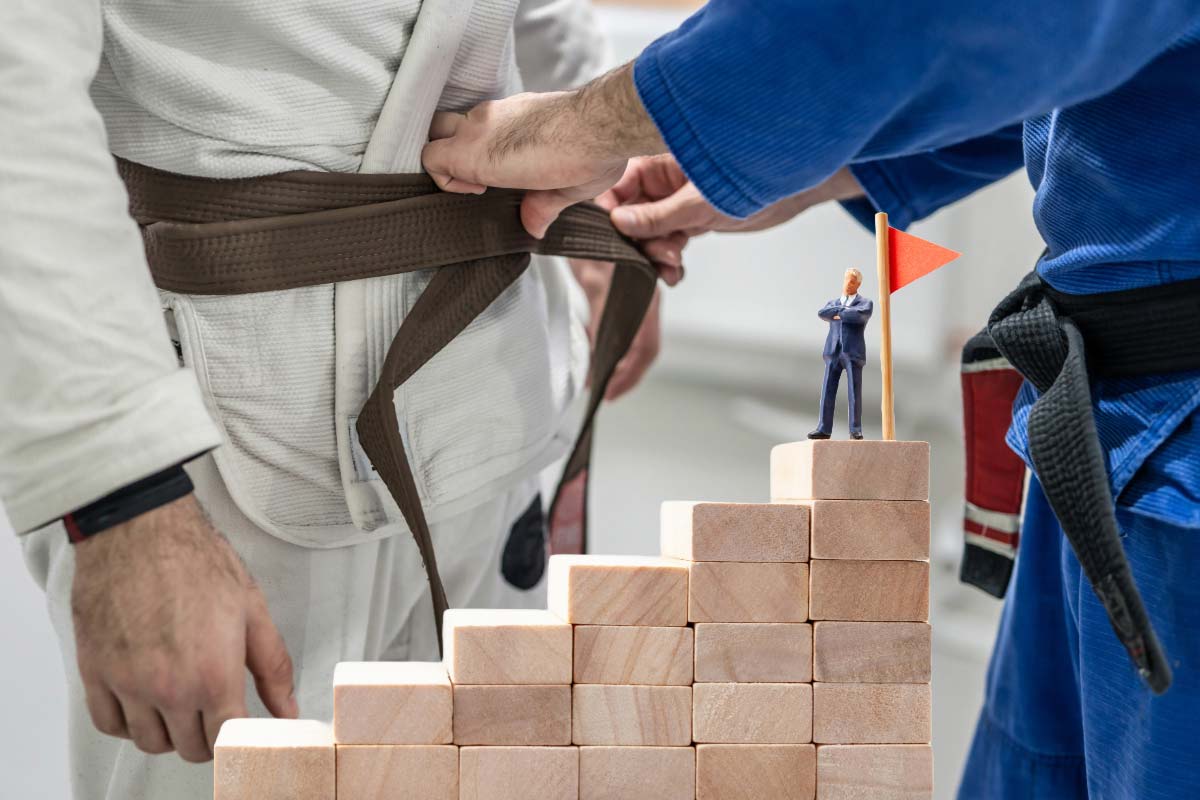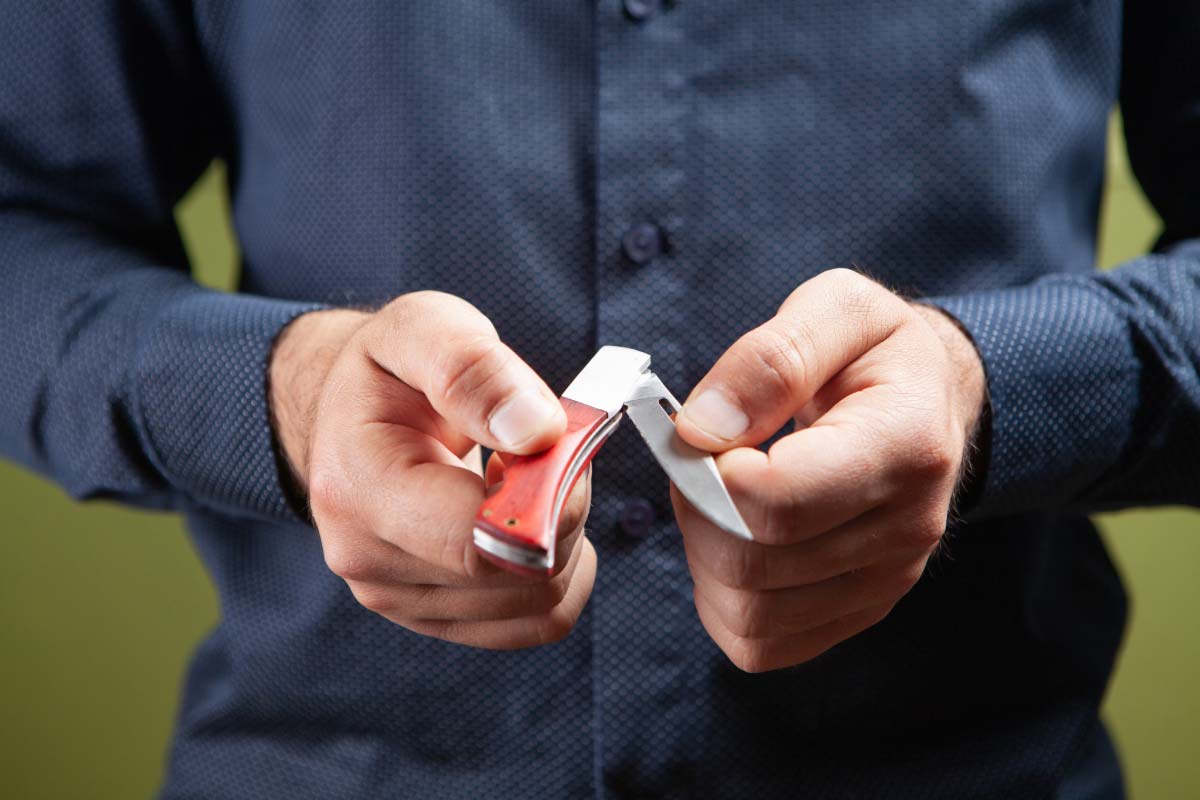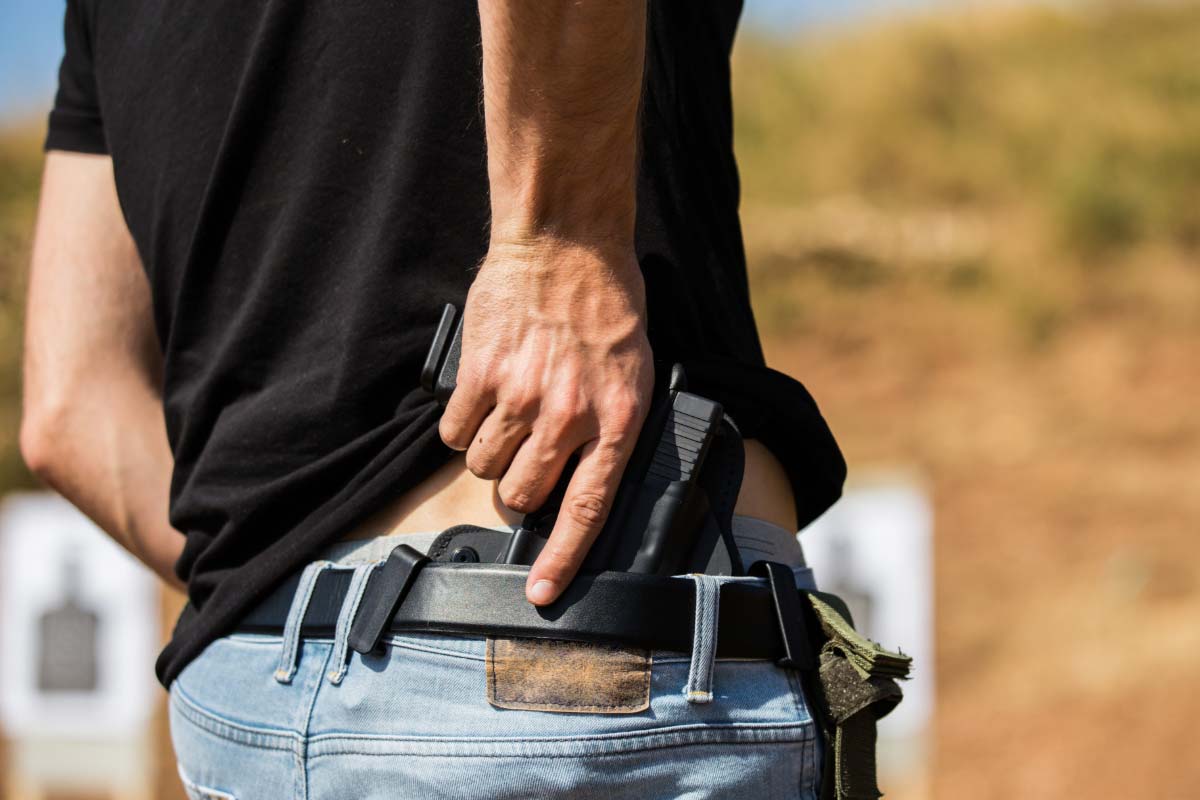Krav Maga, a modern self-defense system developed for real-world applications, sets itself apart from traditional martial arts through its practical approach and emphasis on efficient, instinctive movements.
Explore how Krav Maga stands out as a practical and effective self-defense discipline.
Key Takeaways:
- Krav Maga prioritizes real-world self-defense scenarios not sport or competition.
- Krav Maga emphasizes simplicity and efficiency to perform practical techniques in high-stress situations.
- The adaptability of Krav Maga techniques allows for a versatile response to various threats.
- Krav Maga integrates offensive and defensive techniques from other disciplines to defend against common street attacks.
- Stress training and mental preparedness are key components of Krav Maga, enhancing practitioners’ ability to respond effectively in dangerous situations.
This article covers:
Brief Overview of Krav Maga
Krav Maga is a modern self-defense system that originated in Israel and is different from traditional martial arts in several ways.
Unlike traditional martial arts, Krav Maga emphasizes practical techniques that can be used in real-life self-defense situations.
It is designed to be simple and easy to learn, making it accessible to people of all ages and fitness levels.
Krav Maga was developed by Imi Lichtenfeld, a former boxer and wrestler, who used his experience to create a system that was effective in real-life situations. It was originally developed for the Israeli Defense Forces, but has since gained popularity around the world as a self-defense system for civilians.
One of the key features that sets Krav Maga apart from traditional martial arts is its focus on self-defense.
While traditional martial arts often focus on competition and sports, Krav Maga is designed to be used in situations where the practitioner’s safety is at risk.
This means that Krav Maga techniques are practical, efficient, and effective in real-life situations.
Another key feature of Krav Maga is its emphasis on aggression and violence.
Unlike traditional martial arts, which often emphasize discipline and control, Krav Maga encourages practitioners to be aggressive and assertive in defending themselves.
This means that Krav Maga techniques are designed to be powerful and decisive. Techniques are designed to address the immediate threat and neutralize it quickly. This is accomplished by inflicting maximum damage as quickly as possible.
Practical Focus on Self-Defense
Krav Maga is a discipline that prioritizes practical self-defense techniques intended for real-world scenarios, including common attacks and threats involving lethal weapons.
Unlike traditional martial arts, Krav Maga does not involve set forms or patterns, instead emphasizing techniques applicable to self-defense situations.
These techniques are straightforward, easily learnable, and suitable for individuals of any size or strength.
As a simple example, Krav Maga uses a very practical fighting stance that is optimal for both offense and defense. The basic Krav Maga fighting stance involves fighting with your hands up to maintain a high guard with hips and shoulders squared up facing your opponent. In contrast, a typical Taekwondo stance is very bladed with hands down making the fighter susceptible to takedowns, leg kicks, strikes to the heads, and other causes for concern.
Furthermore, Krav Maga is tailored for combat and street fighting situations, where there are no rules or regulations, and may include maneuvers such as groin strikes or eye gouging.
Additionally, law enforcement personnel can utilize Krav Maga techniques to restrain suspects and safeguard themselves from harm.
Simplicity and Efficiency
Krav Maga is known for its simplicity and efficiency. Unlike traditional martial arts that require years of training, Krav Maga focuses on practical approaches that can be easily learned and applied in real-life situations.
The techniques are designed to adapt instinctive movements to make them more efficient. This allows training of natural reactions to be executed quickly and effectively, making it an ideal self-defense system for people of all ages and fitness levels.
Krav Maga emphasizes various striking and kicking techniques with an emphasis on targeting vulnerable areas such as the eyes, groin, or throat. While strikes are not limited to these target areas, the underlying principle is to ensure the techniques are powerful and effective for most people in most situations.
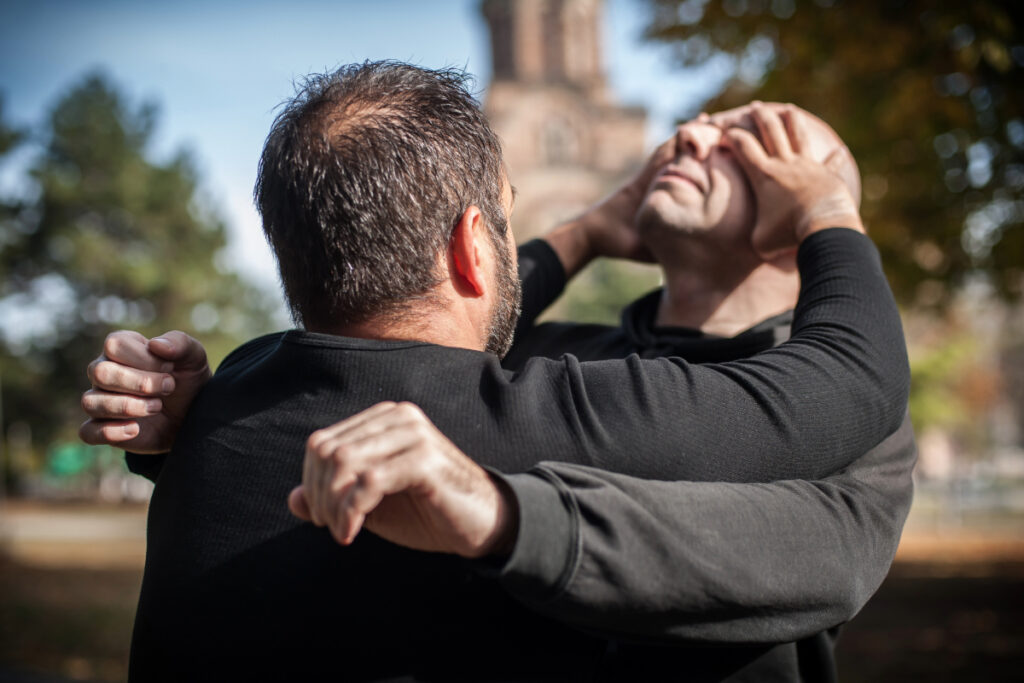
The system is based on principles that prioritize efficiency and practicality over traditional forms and techniques. Krav Maga is not designed to “look pretty” or be a “clean” martial art in any way.
While traditional martial arts, like Taekwondo or Karate for example, typically require students to wear uniforms such as a gi or kimono, Krav Maga does not. Krav Maga takes a no non-sense approach to training. Students will typically train in regular athletic clothing with shoes being optional.
Adaptability and Real-World Application
Krav Maga stands out from other martial arts due to its adaptability and practicality in real-world situations. The tactics used in Krav Maga are designed to be effective in both unarmed and armed scenarios.
This means that practitioners of Krav Maga are trained to defend themselves against attacks such as punches, kicks, grabs, and chokes, which are the most common types of attacks that people face in real-life situations.
At higher levels in the system, practitioners train to defend against weapons like guns, knives and sticks.
One of the key aspects of Krav Maga is its focus on situational awareness.
Practitioners are trained to be aware of their surroundings and to use their environment to their advantage.
This means that they are prepared to defend themselves in any situation, whether they are in a crowded area or a confined space.
As opposed to ground fighting arts like Jiujitsu, Krav Maga practitioners are conditioned to get off the ground and up to their feet with a sense of urgency.
There is an emphasis on gaining tactical and advantageous positioning by rising to your feet when taking into consideration the threat of weapons and multiple attackers.
Krav Maga is also designed for the streets, not for competition. That is why it is often considered a discipline or self-defense system as opposed to a “martial art”.
Almost all other martial arts are limited to practicing in controlled environments with padded floors or mats. However, Krav Maga is meant to be used in real-life situations and in different environments so training may take place on mats or in the streets.
Some Krav Maga schools use outdoor training activities such as fighting in elevators, using cars to simulate hijackings or kidnappings, chairs and other obstacles, as well as training on pavement to simulate a more realistic approach to self-defense.
This means that practitioners train with shoes on and are taught to defend themselves in the clothes they would normally wear.
Integration of Combatives and Defense
Krav Maga is a self-defense system that integrates combatives and defense techniques from other disciplines. Unlike other martial arts, Krav Maga focuses on real-life combat situations. It is designed to prepare individuals for common street attacks, military, and law enforcement scenarios.
Krav Maga emphasizes the use of strikes, holds, and grappling techniques to subdue an attacker. It also emphasizes the use of weapons and contact combat.
Krav Maga practitioners are trained to use their surroundings as weapons and to improvise when necessary.
Krav Maga’s integration of combatives and defense techniques allows practitioners to respond to various types of attacks effectively. It teaches individuals to use their bodies as weapons and to defend themselves against multiple attackers.
In Krav Maga, the emphasis is not on winning clean, but instead on survival so that one may walk away in peace.
Practitioners are taught to neutralize an attacker quickly and efficiently and to escape the situation as soon as possible.
Another unique aspect of Krav Maga is to execute simultaneous defenses and counterattacks whenever possible. This is inline with the principle of addressing immediate threats and neutralizing them as quickly as possible.
“The thing that differentiates Krav Maga is the ability to defend simultaneously or as close to it as possible. Other martial arts teach great defenses but don’t address what happens after you defend. It’s very unlikely that your attacker will just decide to stop so the simultaneous counter helps to prevent the follow up attacks from coming.”
Ricky Ruelas, Chief Instructor at 360 Self Defense Academy
For example, a trained Krav Maga practitioner might defend an incoming punch by blocking or redirecting it, while at the same time sending a counterpunch of their own. In contrast, a traditional style boxer would likely defend the punch first, then follow up with their own strikes or combos.
Stress Training and Mental Preparedness
Krav Maga training is unique in that there is significant emphasis on stress training and mental preparedness through various types of drilling.
This training involves exposing students to high-stress situations to help them develop the necessary skills to remain effective in emergency situations.
The training is designed to help students react quickly and effectively in high-stress situations, where they have to make split-second decisions.
Example training drills may include practicing techniques in low-light conditions, simulating surprise attacks, practicing techniques while fatigued or dizzy, and against multiple attackers or other disadvantaged scenarios. These drills help students develop the mental fortitude needed to remain effective in real-life situations.

Krav Maga’s stress training and mental preparedness approach sets it apart from other martial arts, which may focus more on simply technique and form. By preparing students for high-stress situations, Krav Maga gives them the tools they need to handle real-world emergencies with confidence and effectiveness.
Krav Maga Fighter’s Edge
Even the most skilled traditional martial artist, if their training lacks the element of sparring, may find themselves at a disadvantage in a real confrontation.
Without the experience of live, full contact exchanges, these martial artists might not be accustomed to the unpredictability of a dynamic fight. They may also lack the sensation of taking a hit.
The controlled environment of their training, while perfect for mastering technique, doesn’t always prepare them for the chaos of a realistic altercation.
In contrast, a Krav Maga black belt from a reputable school is likely to have undergone rigorous training that simulates high-pressure situations.
Krav Maga’s curriculum is designed to push practitioners to their limits, exposing them to scenarios that mimic the stress and surprise of real-life encounters.
Moreover, Krav Maga practitioners are trained to have versatile fighting skills. Unlike someone who specializes solely in stand-up striking like boxing or solely in ground fighting, a Krav Maga black belt is equipped with a comprehensive skill set that includes proficient striking, defenses against various weapons, and techniques for ground fighting.
This well-rounded approach ensures that a Krav Maga practitioner can adapt to a wide range of scenarios, giving them a significant edge over an opponent who may only be experienced in one fighting style.
What martial art do you think most closely resembles Krav Maga training? Leave a comment below.

